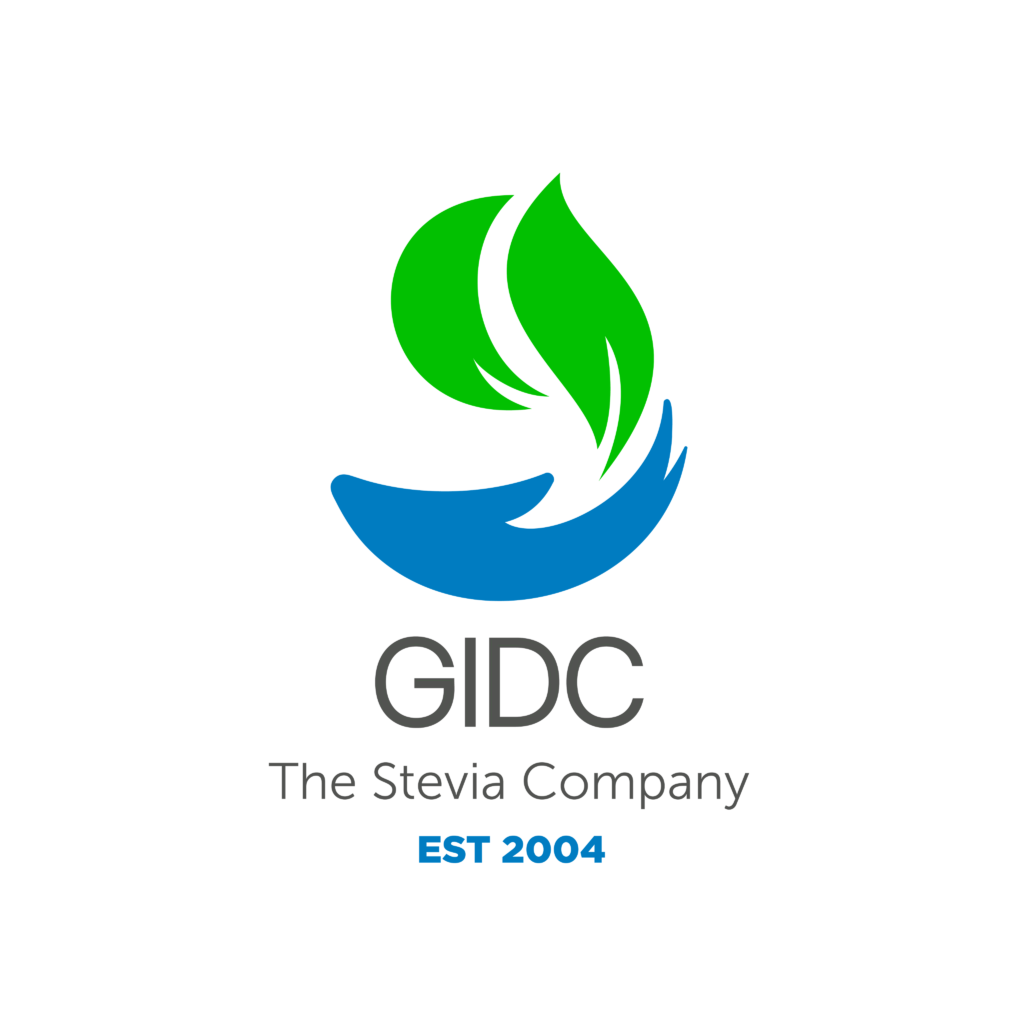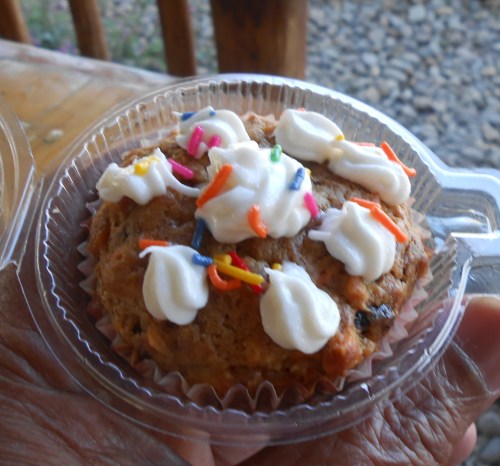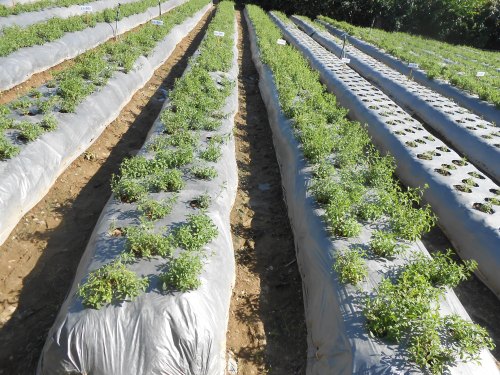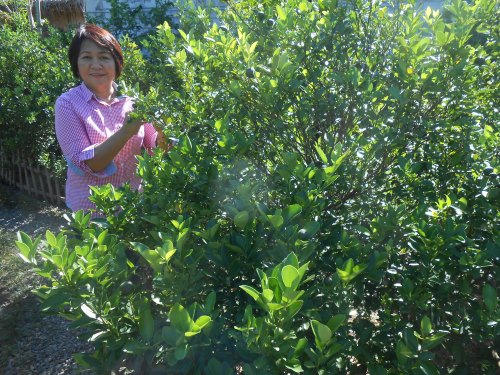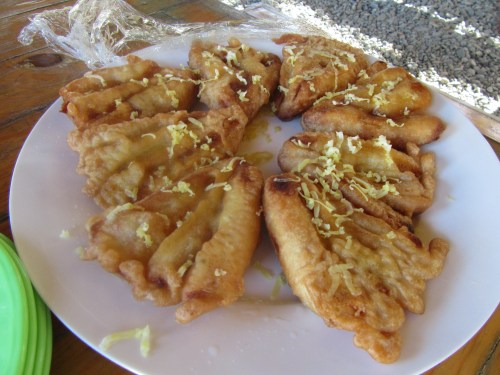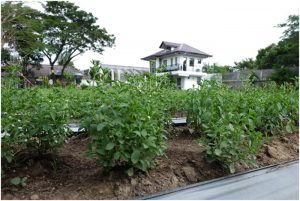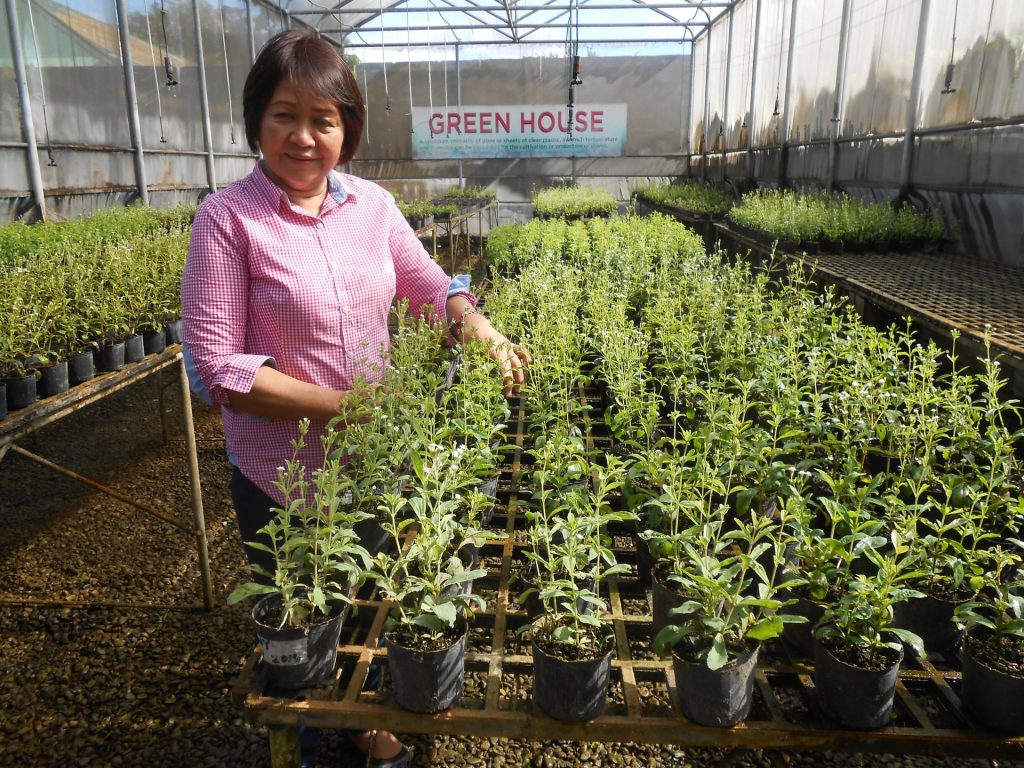
A pioneer commercial Stevia grower and processor accredited by the Department of Tourism is fast becoming an agritourism destination. On February 5, it will be visited by the participants in the AANI Farm Tour which regularly visits interesting farms in the country.
This is the Sweet & Fit Farm in Brgy. Tambobong, Bocaue, Bulacan developed by Mrs. Maura David de Leon, 62, an enterprising businesswoman with a special interest in farming because she was raised in a farm in the barrio where her father was a progressive farmer.
Mrs.Maura de Leon In The Stevia Nursery
Of course, for those who are still not familiar with Stevia, Mrs. De Leon would tell you that the powder extracted from the leaves is a healthy sugar substitute for sweetening foods and beverages. The dried leaves can also be made into a tea. Stevia provides important health benefits because it has zero calories so it is particularly recommended for dieters as well as diabetics. Stevia is really very sweet. One-half tablespoon is equivalent to 3 tablespoons of refined sugar.
What can the agritourists see at the Sweet & Fit Farm? Well, they can see how Stevia is grown organically in beds covered with plastic mulch. They can also see how cuttings are rooted in black nursery bags in a greenhouse. They will be given a lecture on the various uses of the leaves and the powder that was produced by means of spray-drying. And of course, they can also taste some of the food products that have been prepared with Stevia.
The company has grown into a promising business. Besides producing the powder commercially, it also has loose dried leaves and powdered dried leaves for making tea. In addition, the family is manufacturing various coffee and chocolate blends using Stevia as a sweetener.

Mrs. Maura de Leon with her Glorious Blends of coffee and chocolate 
Carrot cake sweetened with Stevia 
Elizabeth Se, one of the staff, checks the vermicomposting bin
THE START – Mrs. De Leon did not envision that Stevia will become a major business for her. For 17 years, she was in the garments business until the industry was practically killed by competition from China. She next went into chemicals, then to homecare products which proved profitable because a supermarket chain has been a very good customer.
One day, Maura and her father Pedro, a very discerning farmer, were looking at a framed picture of a carabao and a farmer she bought from SM. Her father had asked what she could see in the picture. And she answered that, well, she could see the grass, the carabao, and the farmer. Then her father asked what else she could see and Maura answered, there was nothing more she could see.
Her father then pointed out. Don’t you see that the carabao is much fatter than the farmer? The farmer is malnourished. We should help the farmers, the father said. And that really sent her into thinking about what project she could undertake to help the poor farmers.
At that time, her elder sister suffered from a stroke due to high blood pressure and diabetes. After reading more about diabetes, she wanted to be proactive and contribute to helping prevent the increasing number of diabetics. This is how her research and experimentation with stevia started, which led to her acquiring seeds from Paraguay. That was about 12 years ago.
Maura experimented on how to culture the plant. After doing many trials, they were able to grow the plant pretty well. But Maura admits that you can’t give specific practices to successfully grow Stevia. She says that you may be successful this time. Then you duplicate what you have previously done and the results may be very different. Anyway, they can now produce the plant in commercial volume.
The 2-hectare demo farm is open to visitors. There they have more than 100 plots, each planted to at least 200 hills of Stevia.

A view of the Stevia plantation 
The sacks are combination of vermicompost and some well-composted chicken manure for fertilizing the plots 
Mrs. Maura de Leon in the calamansi plantation
Then there are other Stevia plantations in different areas in Bulacan that the family is operating. In addition, there are more than 40 farmers who are growing Stevia for Sweet & Fit that have been given a regular source of income. Once the plants are established after five to seven months, the first harvest may be made and succeeding harvests are made every 15 days thereafter.

Saba maruya sweetened with Stevia.
In reality, Maura did not plan it that way. When she was able to grow the plants successfully, she extracted the juice with a mechanical extractor. But she did not really know what to do with the juice. She stored them in drums and rented a bodega for storing them. She was paying as much as P30,000 a month for storage of hundreds of drums yet there was no income from it.
She conducted her own experiments. She tried mixing dried Stevia leaves with chicken feed and egg production doubled but the eggs were smaller with a very thick shell. That may be because Stevia is rich in calcium. Mixing the same with hog feed also made the pigs grow faster and there was no smell in the pigpen. She consulted some veterinarian for advice but she did not get any encouraging word.

Mrs. De Leon preparing Stevia tea with tarragon
Fortunately, she met an engineer from the Department of Science and Technology (DOST) who introduced to her the spray-drying technology. And that was the big break for Sweet & Fit to manufacture Stevia powder. She bought most parts of the processing facilities from Germany partly with a P1 million loan from Europe which was paid in two years and then renewed for another two years.
Now, one can understand how happy Mrs. Maura de Leon is today. Her dream of really helping the poor farmers has become a reality. More farmers are expected to benefit as more of them will be growing Stevia for the company.
Source: First Commercial Stevia Grower And Processor In PH As Tourist Destination
